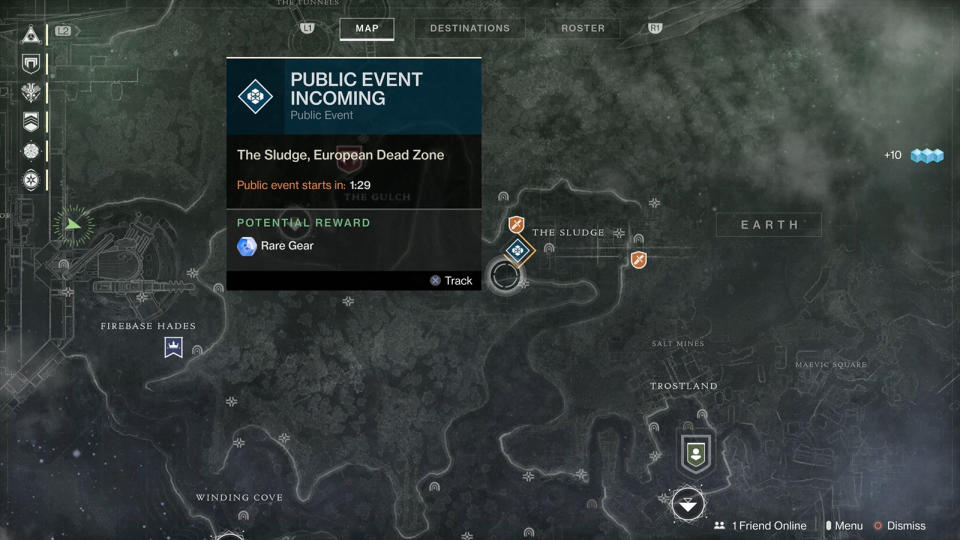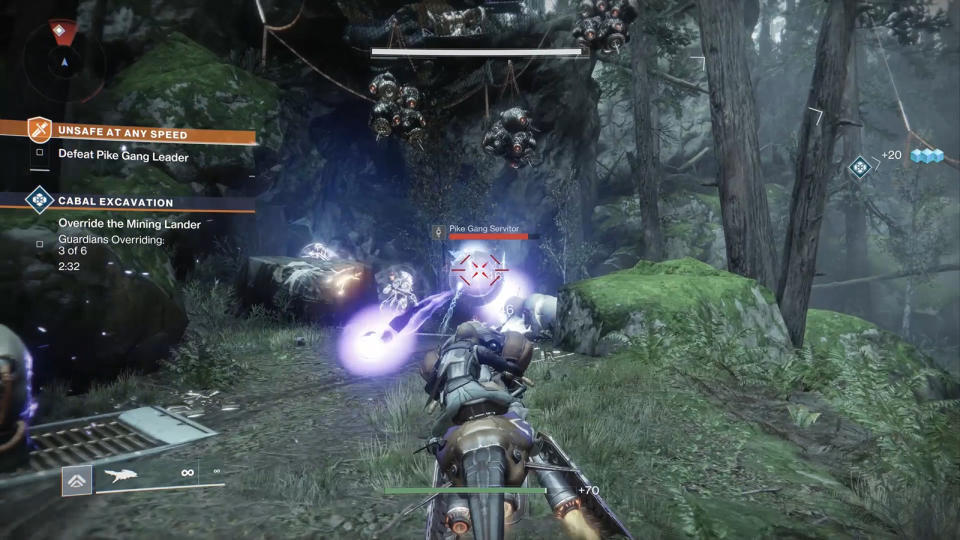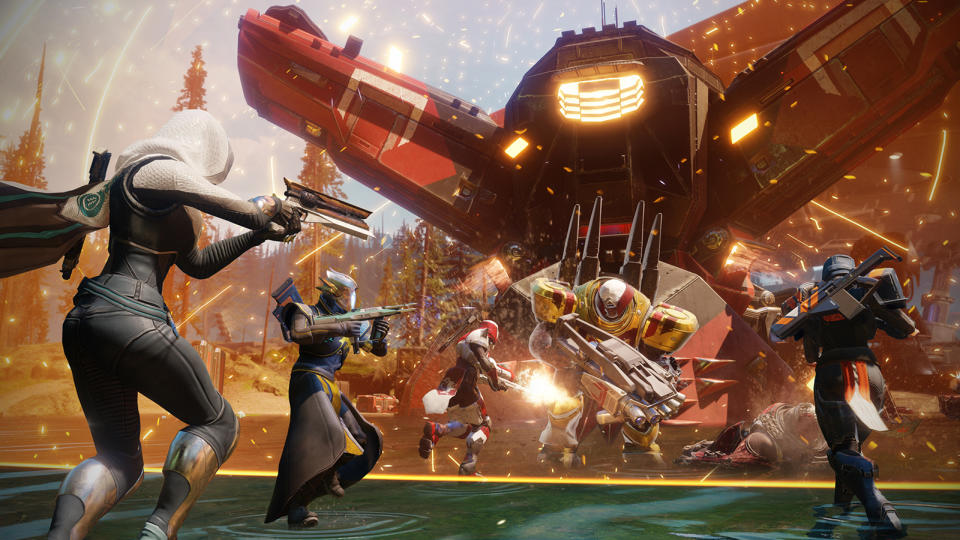'Destiny 2’: A more open and impactful shared-world experience
The European Dead Zone is my new favorite online playground.
My first experience with Bungie's shared-world online shooter was the result of a challenge. It was 2014, and I still hadn't upgraded to the new console generation. It was early in the cycle, and I had yet to stumble across a game that justified the upgrade. Then, Engadget's gaming staff insisted I try Destiny. I did. And I hated it.
My friends had primed me for an epic space opera with tight gunplay and exciting challenges -- but to me, the game felt like an intentionally tedious shooting gallery filled with generic enemies that soaked up bullets like a dry sponge. I found Destiny and its expansions so boring that I was hesitant when Bungie invited me to try the game's sequel ahead of launch. Today, I'm eating my words. Destiny 2 is shaping up to be everything its predecessor wasn't.
Destiny 2 feels cohesive in a way that the first game never managed. The original title defied genre expectations by living in a space somewhere between a massively multiplayer online RPG, a twitch-based FPS game like Call of Duty and cooperative loot shooters like Borderlands -- an odd combination that Bungie tried to define with the aforementioned phrase: "shared-world shooter." Those three words have since become synonymous with Destiny, but the game itself never quite lived up to them. The sequel does.

It's all about structure and execution. The world of Destiny 2 breathes with persistence from the first moment you step into the European Dead Zone. Much like the Old Russia area from the first game, the European Dead Zone is the first part of the ruined earth the player can access -- unlike Old Russia, however, it's a vast open map that they can explore at their own pace.
Instead of picking a mission on a sterile map in the game's menu, Destiny 2 asks players to explore the world around them. Think of it like an online take on open world games like Skyrim and Fallout 4: The story exists on a large backdrop that continues whether or not you take on any particular mission. If you choose to play a story mission or go on a 15- to 20-minute adventure side-quest, you'll have to physically walk across the map to start it -- and you just might stumble upon something else interesting to do on the way there.
It seems like a small change, but it lends Destiny 2 a sense of living authenticity. The player exists in this shared world, but it's active and persistent without them. The area's main NPC, Devrim Kay, sits in his church tower and fires at enemies. He's in his war even when you aren't. It's a world that seems to plod on with its own agenda -- at one point during my time with the game, I was halfway through an adventure mission that asked me to clear a specific facility of Cabal soldiers, but halfway through the task a public event introduced another faction of enemies into the fray.

Soon, other players started showing up to participate in the impromptu multiplayer mission, and I noticed that they weren't just fighting the enemies from the public event but the foes in my solo mission as well. Then I noticed that the two enemy factions weren't just fighting the other players, but each other. I may have logged in to play a few adventure missions by myself, but I inevitably got caught up in a multiplayer brawl.
This chaotic experience defined Destiny 2's shared world for me. It feels like a clean fusion of the large-scale multiplayer worlds of MMOs like World of Warcraft and the more focused experience offered by the original Destiny.
Better still is how this open world experience is controlled by an improved map. The game's director menu now includes a robust overhead for whatever area the player is currently exploring and allows them to select waypoints to mission or adventure starting locations, easily find public events for quick group play or select new "landing zones" to fast travel to other parts of the map. Not only is it a handy tool, but it also encourages exploration -- giving players a way to help them navigate the open world areas while they search for treasure chests and the hidden micro-dungeons the game calls "Lost Sectors."

The game's areas are also flush with variety. The European Dead Zone contains a ruined city, lush forests, overgrown freeways and fields, as well as caves, lakes and various abandoned facilities to explore and fight in.
Destiny 2's core fundamentals seem better, too. Players still have to contend with waves of enemies, but battles feel more balanced. For me, the original game leaned a little too hard on bullet sponge battles where enemies could soak up clip after clip of weapons fire without consequence. Now, they seem to fall with just the right amount of punishment. Taking down a swarm of Thrall just feels less tedious. Every action, every bullet fired and every melee attack just feels like it lands with more impact. I no longer feel like battles are wasting my time with the artificial difficulty of giving enemies too much health.
The game also breaks up the standard first-person shooter gameplay in multiple ways. While wandering the European Dead Zone, I stumbled across adventure missions that primarily had my character taking out enemies using vehicular combat -- and if I ever grew tired of taking out a mob with my rifle, I could always wait until my super move charged. In fact, the super moves are one of my favorite things about the new game, as they temporarily morph the game from an FPS to a high-damage third-person melee brawler. Taking out a group of enemies with a flaming sword, electrified staff or ephemeral shield is a ton of fun, and adds a variety that helps keep things feeling fresh.

In a lot of ways, Destiny 2 feels more streamlined than the original. The open-world mechanic makes it easier to decide what you're going to do next, and the way players intermingle in that online environment makes shared-world interactions feel more natural. It culminates in an experience that's one step closer to a traditional MMO game without losing what makes Destiny feel unique.
For the past three years, I dismissed Destiny without hesitation. I still see the original game as a muddled mess of bad narrative, dull gameplay and unnecessarily obtuse structure -- which makes my fondness for its sequel all the more impressive. In Destiny 2, Bungie has created a game that builds upon the strengths that attracted the original game's dedicated fan base, while somehow excising the tedious elements that drove players like me away. If, like me, you just couldn't get into the company's first shared-shooter, consider giving its second one a look. As near as I can tell, Destiny wasn't the amazing shared-world space opera I've been hearing about since 2014 -- but its sequel might be.





















